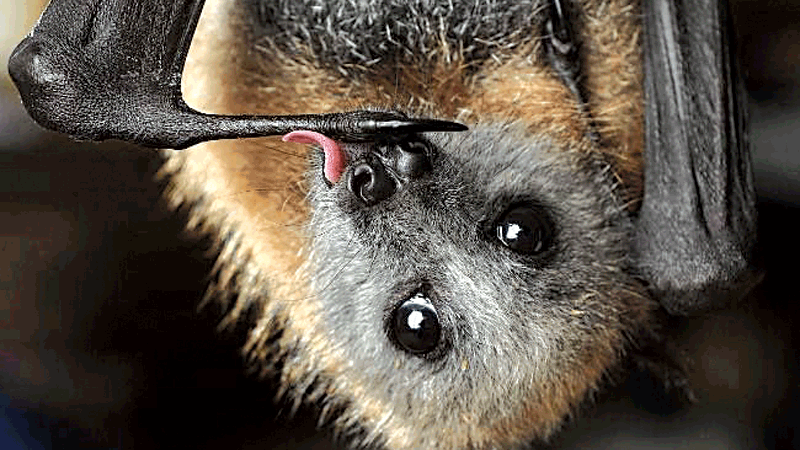BATS WELCOME
 My daughter told me there had been a bat circling around the light by the barn when she came home from work late one night recently. Two nights later she saw it there again.
My daughter told me there had been a bat circling around the light by the barn when she came home from work late one night recently. Two nights later she saw it there again.
When we moved here we saw bats every summer night we went out if the weather was fair, circling around that light, the barn, the house. But ten, fifteen, twenty years ago the bats were gone. Was the bat my daughter saw a few nights ago a harbinger of bats returning? I hope so.
Bats are welcome around my home. They feed on mosquitoes and other insects and that suits me fine. A little brown bat, one of the species we have in Indiana, will eat three to four thousand mosquitoes in a single night, according to one researcher. It will also eat flies, beetles, bugs, anything it seems, that flies and is small enough for a bat to catch.
When I was young I was told that bats caught insects like swallows, by snatching them out of the air in their mouths. Many people still believe that. But high-speed motion photography has shown it’s not true. Bats catch mosquitoes and other prey, one at a time, in the fold of a wing, then grab it with their sharp pointed teeth.
Bats have always been welcome to me but they weren’t to my wife. Once when she awoke in the morning there was a bat in our bedroom, flying. My wife grabbed my arm, yelled “There’s a bat in here,” piled out of bed and out of the bedroom, slamming the door behind her. The bat circled the room, then landed on a curtain. I got up, picked it off the curtain and carried it outside. My wife screamed at me as I walked past, “Kill it! Kill it! Kill it!” I didn’t. I let it go outside.
Bats are not only beneficial, they are fascinating to watch, to me anyhow. They dart about in the air more erratically and more swiftly than swallows. Their eyesight is excellent but they also have echolocation.
Echolocation is radar, emitting sound waves then receiving and interpreting waves that echo back from anything they strike. This enables bats to fly in total darkness or when their eyes are taped shut as has been done in experiments.
Most species of bats are small. All of the bats of North America are, certainly all I’ll ever see in Indiana. But there are a few species that are larger, much larger. They are called fruit bats or flying foxes and have wings up to five feet from tip to tip when spread. They eat fruit, not insects and they live in the tropics. They are called fruit bats or flying foxes.
Bats are mammals and like other mammals they give birth to living young. They mate in the fall but don’t give birth until the spring. A female has one or two young at a time, usually just one. A young bat clings to its mother until it is able to fly even when the mother is flying, hunting. A female does sometimes hang her baby on a ledge, by its hind feet, while she goes hunting.
Vampire bats also do not eat insects. Nor do they eat fruit. They live on blood but they don’t suck blood as is commonly believed. They bite, then lap up the blood with their tongue. Vampire bats, like fruit bats, do not live in North America, only in Central and South America.
Bats are sometimes called dirty but they aren’t. They groom themselves frequently. Nor do they carry bedbugs and drop them in homes as has been said. There is one strike against bats, however they do carry rabies. But the incidence of rabies in bats is extremely low. I’d gladly take a chance if bats would return and fly around our house and barn on summer nights again.
- Birds As Weather Forecasters – Life In The Outdoors - December 17, 2021
- Rare Bird Spotted In Indiana – Life In The Outdoors - October 8, 2021
- MY EXPERIENCE WITH DEER – Life In The Outdoors - July 30, 2021


